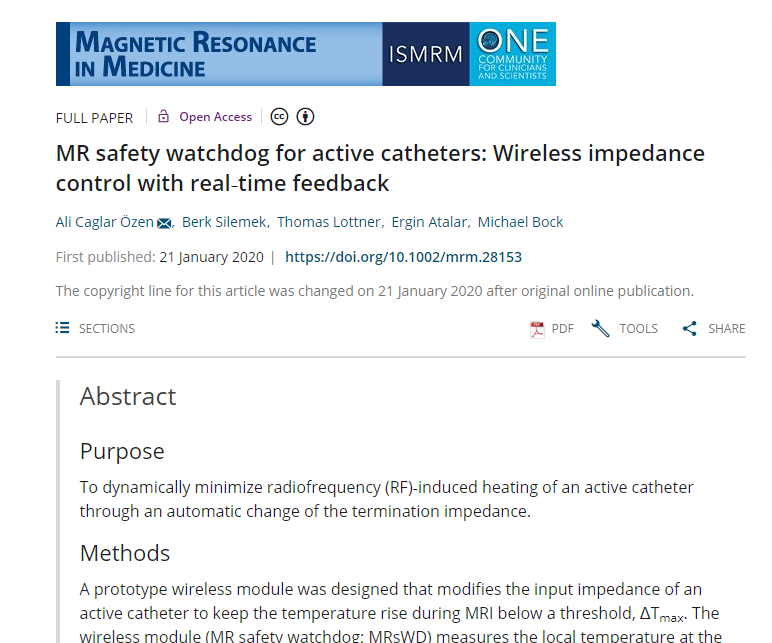Former UMRAM student, Ali Çağlar Özen has authored an MRM article in collaboration with Ergin Atalar on increasing the safety profile of active catheters for possible use in MR-guided cardiovascular interventions. Dr. Çağlar is currently working at the University of Freiburg. The other authors of the article are from the same university. The title of the work is “MR safety watchdog for active catheters: Wireless impedance control with real‐time feedback."
Abstract
Purpose
To dynamically minimize radiofrequency (RF)‐induced heating of an active catheter through an automatic change of the termination impedance.
Methods
A prototype wireless module was designed that modifies the input impedance of an active catheter to keep the temperature rise during MRI below a threshold, ΔTmax. The wireless module (MR safety watchdog; MRsWD) measures the local temperature at the catheter tip using either a built‐in thermistor or external data from a fiber‐optical thermometer. It automatically changes the catheter input impedance until the temperature rise during MRI is minimized. If ΔTmax is exceeded, RF transmission is blocked by a feedback system.
Results
The thermistor and fiber‐optical thermometer provided consistent temperature data in a phantom experiment. During MRI, the MRsWD was able to reduce the maximum temperature rise by 25% when operated in real‐time feedback mode.
Conclusion
This study demonstrates the technical feasibility of an MRsWD as an alternative or complementary approach to reduce RF‐induced heating of active interventional devices. The automatic MRsWD can reduce heating using direct temperature measurements at the tip of the catheter. Given that temperature measurements are intrinsically slow, for a clinical implementation, a faster feedback parameter would be required such as the RF currents along the catheter or scattered electric fields at the tip.
